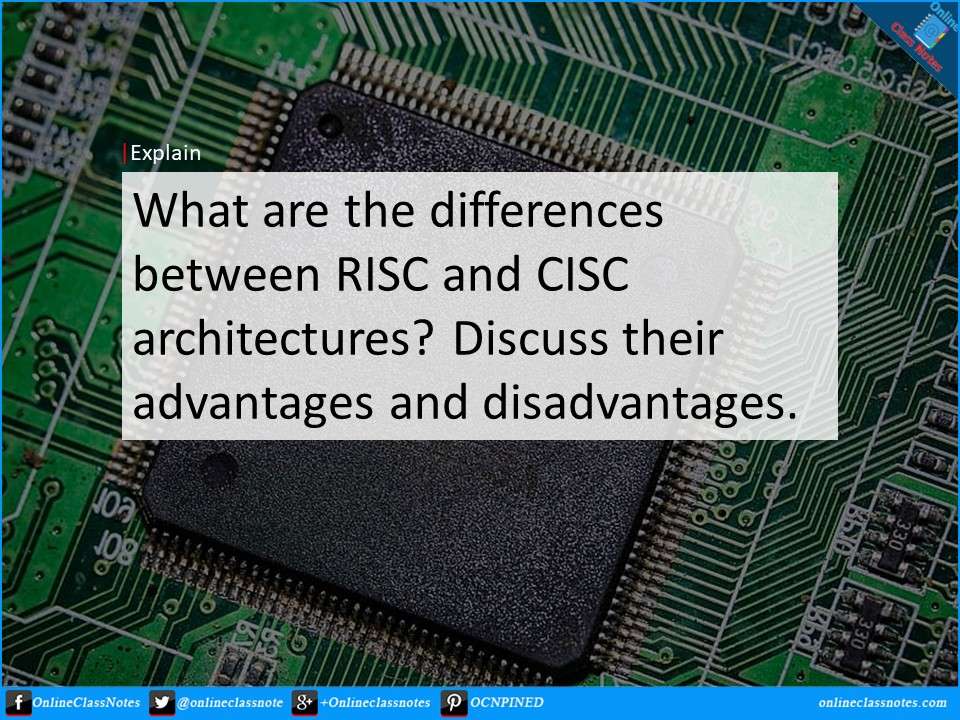RISC (Reduced Instruction Set Computing) and CISC (Complex Instruction Set Computing) architectures are two distinct approaches to CPU design, each with its own characteristics, advantages, and disadvantages.
RISC (Reduced Instruction Set Computing):
Characteristics
RISC processors use a simplified instruction set with a smaller number of instructions, each performing a single operation. Instructions are typically simple and execute in one clock cycle. RISC architectures often employ a load-store model, where data is loaded from memory into registers before operations are performed.
Advantages
- Simplicity: RISC architectures have a simpler instruction set, making them easier to design, implement, and optimize.
- Faster Execution: Instructions execute quickly due to their simplicity and predictable execution time.
- Compiler Efficiency: RISC instruction sets are often more conducive to compiler optimization, leading to better code generation and performance.
Disadvantages
- Code Size: RISC instructions are more primitive, which can lead to larger programs as more instructions are required to perform complex tasks.
- Memory Bandwidth: The load-store architecture of RISC processors may require more memory accesses, potentially increasing memory bandwidth requirements.
- Limited Orthogonality: RISC architectures may lack some complex instructions found in CISC architectures, requiring more instructions to achieve the same result.
CISC (Complex Instruction Set Computing):
Characteristics
CISC processors feature a larger and more complex instruction set, with instructions capable of performing multiple operations in a single instruction. CISC architectures often include instructions for common tasks such as string manipulation, arithmetic operations, and I/O operations.
Advantages
- Code Density: CISC instructions can perform multiple operations in a single instruction, leading to smaller code size and reduced memory requirements.
- Fewer Memory Accesses: Complex instructions can often perform tasks that would require multiple instructions on a RISC architecture, reducing the number of memory accesses required.
- Backward Compatibility: CISC architectures often support a wide range of legacy instructions, making them suitable for running older software.
Disadvantages
- Complexity: CISC architectures are more complex, requiring more hardware resources and complicating the design and optimization process.
- Slower Execution: Complex instructions may take longer to execute, leading to potentially slower overall performance, especially if instructions have variable execution times.
- Limited Compiler Optimization: The complexity of CISC instruction sets can make compiler optimization more challenging, potentially limiting performance gains from compiler optimizations.
RISC architectures prioritize simplicity, fast execution, and compiler efficiency, while CISC architectures focus on code density, backward compatibility, and potentially fewer memory accesses. The choice between RISC and CISC architectures often depends on factors such as performance requirements, code size constraints, and the target application domain.
